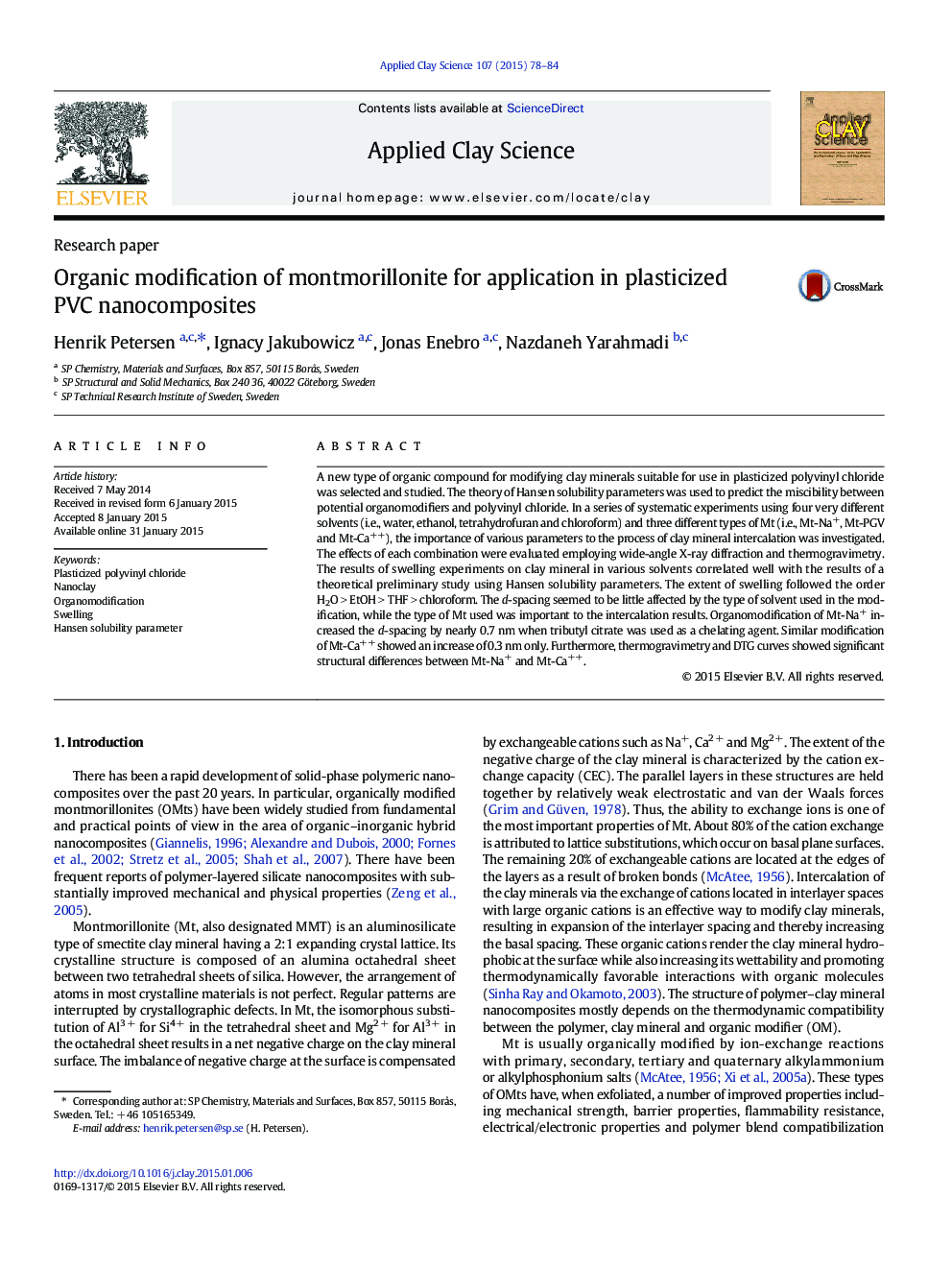| کد مقاله | کد نشریه | سال انتشار | مقاله انگلیسی | نسخه تمام متن |
|---|---|---|---|---|
| 1694530 | 1519072 | 2015 | 7 صفحه PDF | دانلود رایگان |

• Hansen solubility parameters (HSP) were used in a theoretical pre-study.
• Modification procedures were examined with regard to intercalation results.
• Structural differences between different organoclays were found.
• Extent of intercalation was little affected by what solvent was used.
• The type of MMT had a significant importance on intercalation results.
A new type of organic compound for modifying clay minerals suitable for use in plasticized polyvinyl chloride was selected and studied. The theory of Hansen solubility parameters was used to predict the miscibility between potential organomodifiers and polyvinyl chloride. In a series of systematic experiments using four very different solvents (i.e., water, ethanol, tetrahydrofuran and chloroform) and three different types of Mt (i.e., Mt-Na+, Mt-PGV and Mt-Ca++), the importance of various parameters to the process of clay mineral intercalation was investigated. The effects of each combination were evaluated employing wide-angle X-ray diffraction and thermogravimetry. The results of swelling experiments on clay mineral in various solvents correlated well with the results of a theoretical preliminary study using Hansen solubility parameters. The extent of swelling followed the order H2O > EtOH > THF > chloroform. The d-spacing seemed to be little affected by the type of solvent used in the modification, while the type of Mt used was important to the intercalation results. Organomodification of Mt-Na+ increased the d-spacing by nearly 0.7 nm when tributyl citrate was used as a chelating agent. Similar modification of Mt-Ca++ showed an increase of 0.3 nm only. Furthermore, thermogravimetry and DTG curves showed significant structural differences between Mt-Na+ and Mt-Ca++.
Figure optionsDownload as PowerPoint slide
Journal: Applied Clay Science - Volume 107, April 2015, Pages 78–84